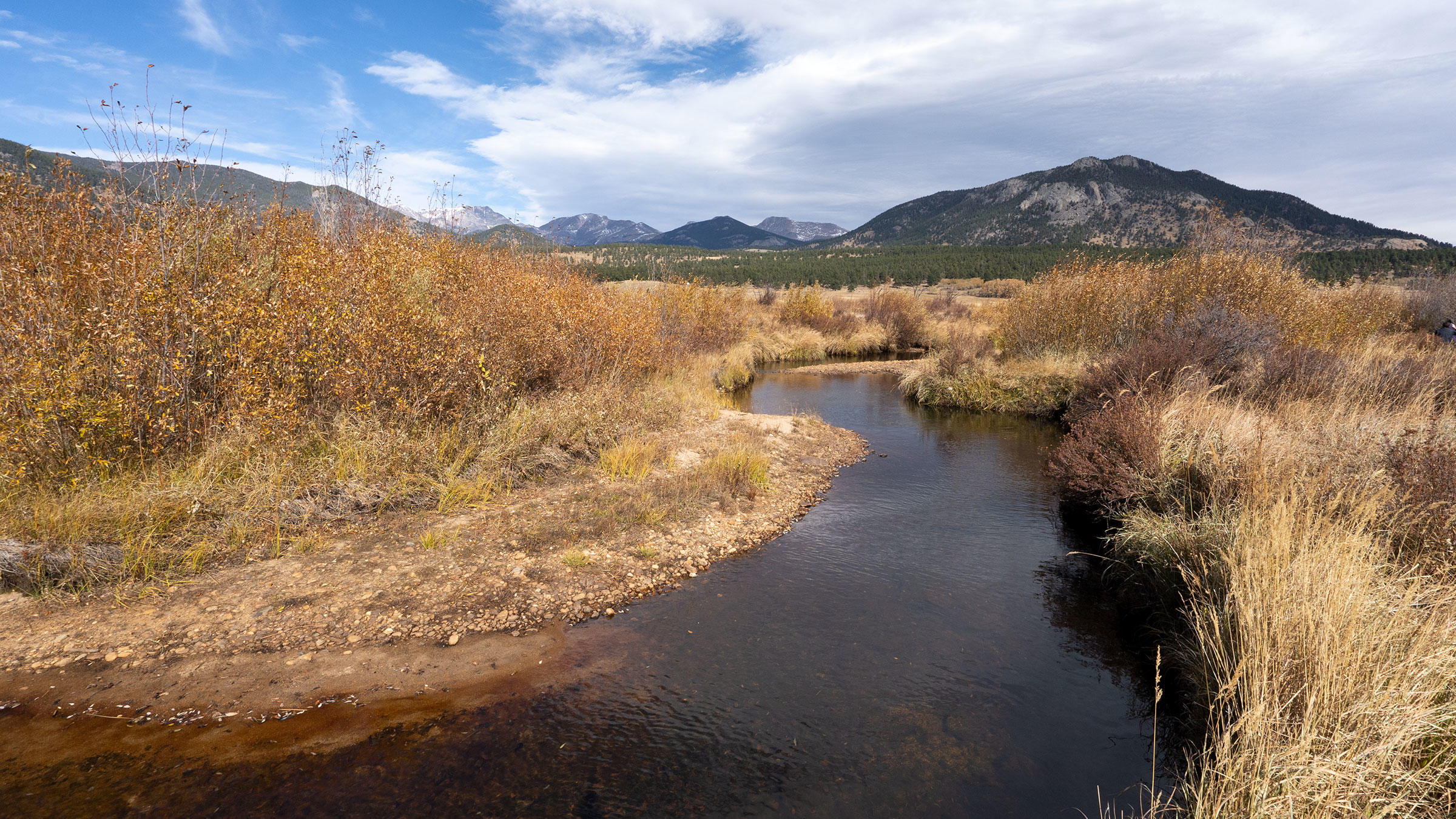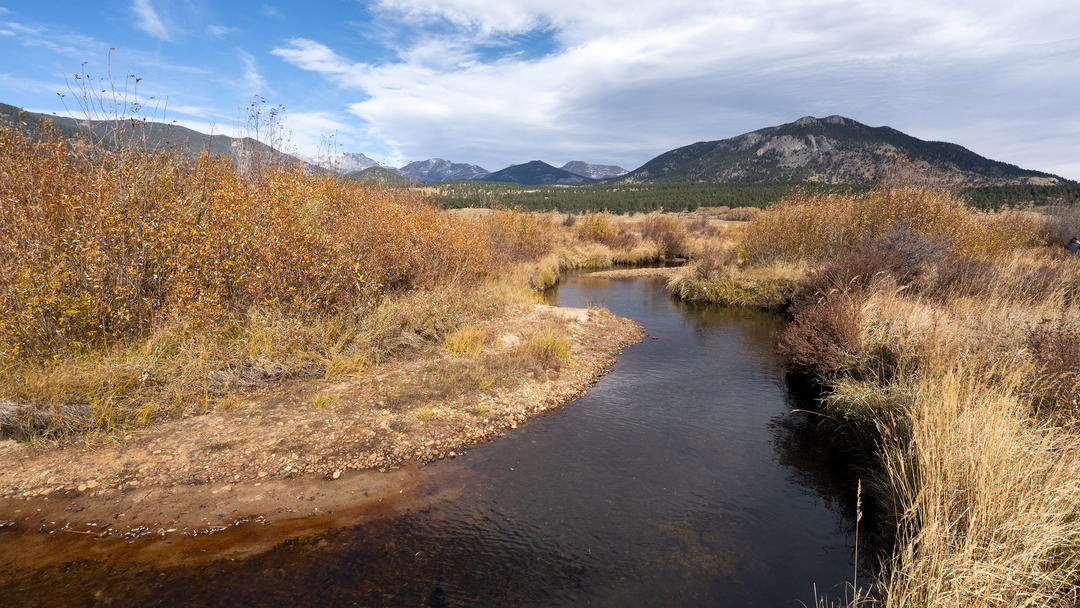Colorado lawmakers returned to the Capitol on January 8th to kick off the 2020 legislative session. Even before bills were introduced, it was clear that the General Assembly will wrangle with issues that will touch every corner of the state and impact the daily lives of Coloradans. Water is one of these key issues.
Despite the optimism from a snowy December, Colorado’s snowpack is now starting to fall closer to average. Although Colorado is perched at 108 percent average snowpack statewide, much of the West Slope remains in drought conditions. With enough snowpack, flurries will melt and become flows for healthy rivers that support all of us. But as water supplies are becoming more unpredictable, sharing a limited water supply—statewide—between urban, rural, agriculture, industry, environmental and recreational needs is the challenge at hand.
Audubon Rockies is working with lawmakers and partners to prioritize water security for people, birds, and the healthy rivers that we all depend upon. Colorado’s birds and people cannot thrive unless our rivers do too. Here are three water priority areas for Audubon Rockies in the 2020 Colorado legislative session.
Funding Colorado’s Water Plan
Water security for Coloradans, birds, and rivers begins with implementing the state Water Plan. In the light of climate change and booming population growth, Colorado’s Water Plan, finalized in 2015, aims to ensure a sufficient supply of water for the various users across the state including environmental, agricultural, municipal, industrial, and recreational needs. Implementing Colorado’s Water Plan is projected to cost $3 billion in total, or $100 million a year over the next 30 years.
In November 2019, voters approved Proposition DD to legalize sports betting and a 10% tax on these casino revenues which will result in an estimated $12 million to $29 million annually, the majority of which will go toward the Water Plan. Proposition DD is expected to generate more than $7 million in new tax revenue for the Colorado Water Plan in 2020, a significant bump up from past funding sources.
At this point, it is not clear how the state will spend these dollars given the various priorities and the considerable Water Plan funding gap. The language in DD was vague and will need refinement and transparency. Stakeholders and lawmakers will likely explore options with the legislature to guide how DD funds are spent on Water Plan implementation.
Audubon will advocate for spending that supports healthy rivers for the birds and people that depend on them, as we support a fully funded Water Plan.
Supporting the Colorado River
In 2019, the Drought Contingency Plan was adopted by the upper and lower Colorado River basin states. One of next steps for Colorado and the other upper basin states is to investigate the feasibility of a demand management program. The Water Resources Review Committee recommended SB20-024 to create a robust public engagement process similar to the development of the Water Plan before adopting any rules or recommendations regarding demand management. While public input is nearly always a positive, this process seems to get ahead of the process established by the Colorado Water Conservation Board’s (CWCB) demand management workgroup. Audubon is monitoring SB20-024.
With Colorado’s water supply becoming more unpredictable and valuable, particularly on the West Slope, concerns were raised by the Water Resources Review Committee to address anti-speculation. Specifically, concerns were raised that agricultural water rights are being sold to entities with no real interest in farming or ranching in Colorado that are holding those rights for future, more profitable transactions. SB20-048, Study Strengthening Water Anti-Speculation Law, would create a working group to explore ways to strengthen anti-speculation laws and report its findings and recommendations to the committee next year. Audubon is in favor of SB20-48 to keep Colorado’s water out of the hands of risky transactions. We need to support our agricultural heritage and the habitats our working landscapes provide.
Instream Flow
For the second year, Colorado lawmakers will see the return of two similar bills attempting to expand the instream flow program. Since 1973, the instream flow program has given the CWCB the unique ability to hold instream flow rights—water rights with the sole purpose of preserving the natural environment by remaining in streams or lakes. First, HB20-1037, Augmentation of Instream Flows, is essentially a rerun from last year with key benefits for the Cache la Poudre River near Fort Collins. The bill permits the CWCB to use water for instream flow purposes, if the water has been decreed for augmentation without seeking a further change of use in water court. (Augmentation water restores water uses that are out of priority.) This would create a new pool of water, with lower administrative costs, which could be available for instream use.
The second bill, HB20-1157, Loaned Water For Instream Flows To Improve Environment, looks to expand the existing instream flow loan program. Under the current law the instream flow loan program allows water right holders to loan water for three years out of a 10-year period to the CWCB to preserve water for rivers where there is an existing instream flow water right. The current program participation is not renewable.
HB20-1157 looks to expand the instream flow loan program by increasing the years of participation from three to five years in a ten-year period, and allow for two additional ten-year renewal periods. It also supports greater notification to local water users, provides for an expedited process to address water-short river emergencies, and adds a longer term procedure for loaning water to instream flow decreed river segments for improvement of the environment. The instream flow loan program is completely voluntary and allows greater flexibility for the water right holder to use their property right in a beneficial way.
In 2019, a similar bill to HB20-1157 passed the House of Representatives only to die in Senate Committee. Perceptions around the potential impacts to soil health from fallowed fields and on historical irrigation return flows from leaving water in stream rather than applying it on the land may have caused the bill to fail. With robust engagement and input from Audubon, partners, stakeholders and the Colorado Water Congress over the past year, bill sponsors are more optimistic for successful instream flow loan expansion in 2020.
Audubon supports multiple tools in the toolbox to support healthy rivers, agriculture, and economies. HB20-1157 and HB20-1037 bring greater flexibility and beneficial options for rivers and water right holders.






